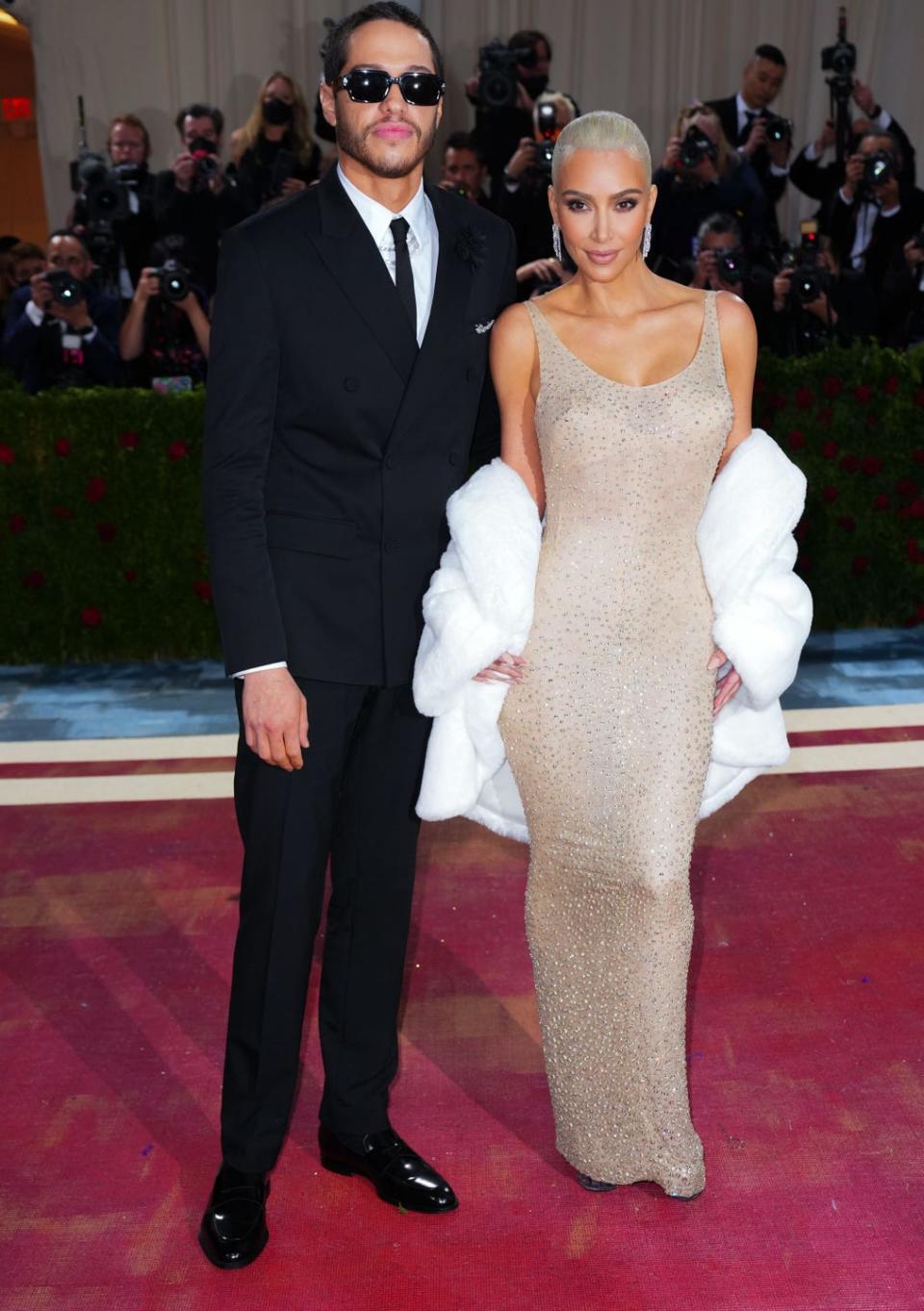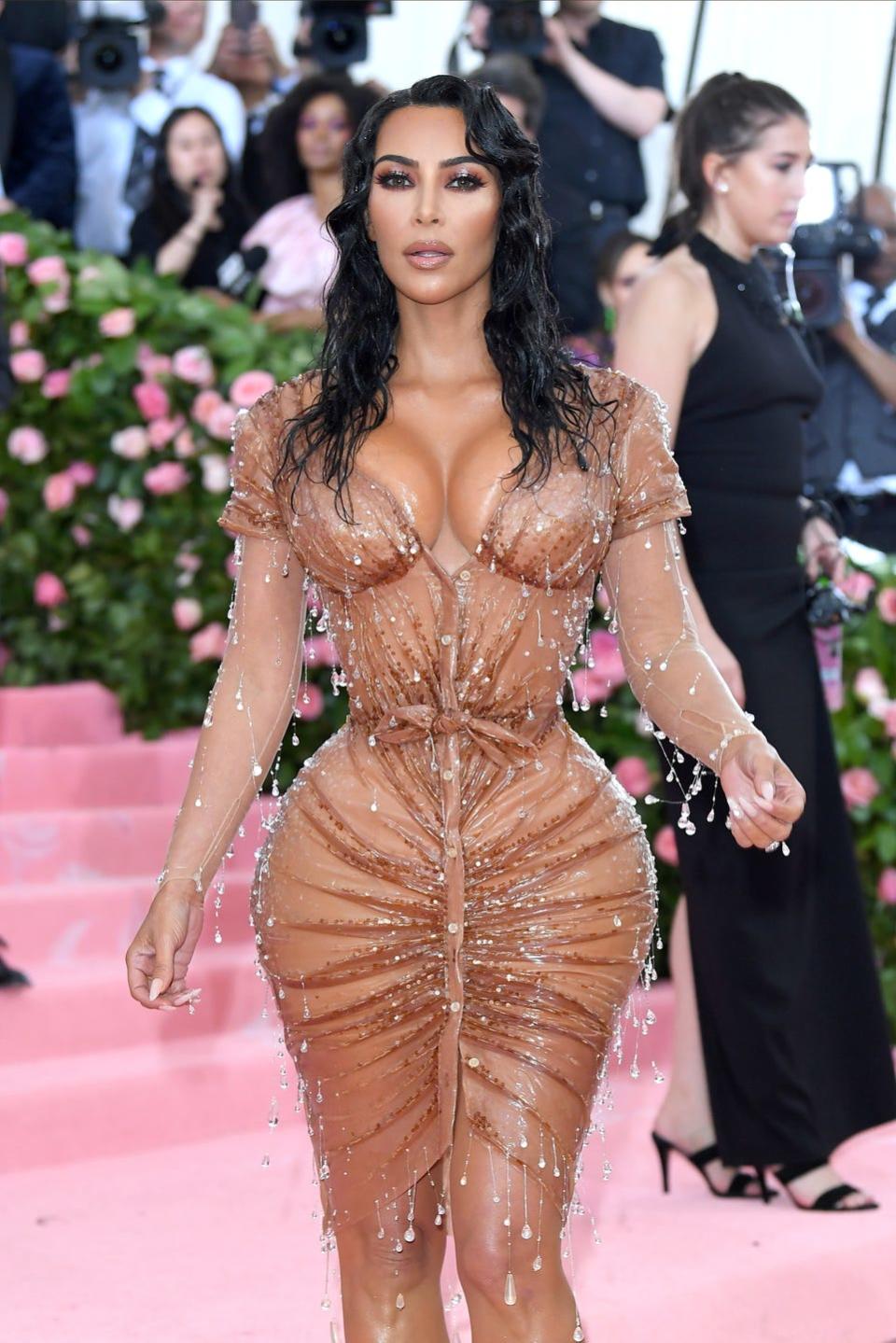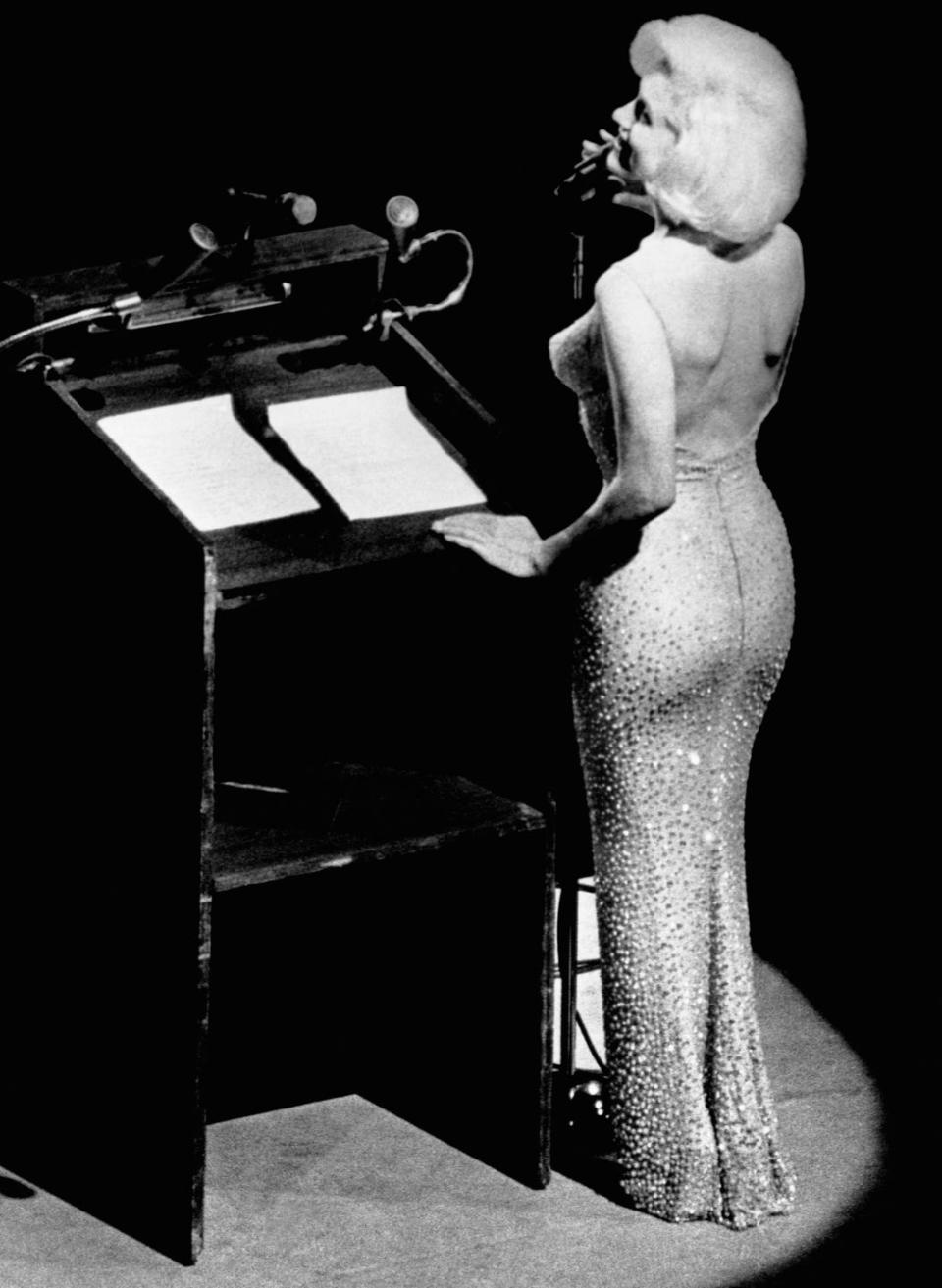Kim Kardashian’s Dangerous Weight Loss Rhetoric Didn't Deserve A Ticket To The Met Gala

Kim Kardashian has attended past Met Galas as a Balmain cyborg, a Versace icon, a wet-look Mugler water nymph and a fully obscured Balenciaga samurai. This time around, she came as Marilyn Monroe. Stepping into the grand-entrance arrival slot usually allocated to Rihanna, Beyoncé or Lady Gaga, Kardashian shimmered in the sheer dress Monroe wore to sing ‘Happy birthday, Mr President’ to John F Kennedy in 1962.
The entrepreneur looked undeniably beautiful. But if the dress was a relic of a bygone era, so too was the way the star talked about fitting into it. Because she was intent on wearing the dress worn by Monroe six decades prior, Kardashian decided to alter her body to fit. She undertook an extreme weight-loss campaign that saw her shed – as she told Met Gala red-carpet host La La Anthony – some 16 pounds in three weeks.
'I would wear a sauna suit twice a day, run on the treadmill, completely cut out all sugar and all carbs, and just eat the cleanest veggies and protein,' she also told Vogue. 'I didn’t starve myself, but I was so strict.' She went on to liken her crash diet to 'preparing for a role'.
The real problem, I'd venture, is that Kardashian - like so many women before her - saw nothing wrong with shrinking herself to fit into a dress in the first place.

Altering your body to squeeze into an outfit is more than ill-advised; it's toxic. Framing extreme weight loss as a rational decision sends women and men the message that they should change their bodies and suffer for fashion if they expect to be worthy of admiration and praise. That the default state for anyone who wants to look her best is deprivation. That if you want to be gorgeous, you’d better 'get your f*cking ass up and work', to quote Kardashian herself.
I wasn’t the only onlooker who saw red flags in Kardashian’s comments on the night. ‘There is nothing normal, healthy or cool about losing weight to fit into a dress,’ read a post shared by @thechain, a peer-to-peer support network for women in fashion, media and entertainment coping with eating disorders. ‘Not even for the Met Gala. Not even if it belonged to Marilyn Monroe.’
BEAT, the UK's leading eating disorder charity, also raised concerns, with the organisation's Director of External Affairs, Tom Quinn, stating: 'Dieting and weight loss advice [such as that recently given by Kim Kardashian] can be very attractive to those affected by eating disorders, who may treat it as "inspiration" to carry out dangerous eating disorder behaviours.'
Of course, Kardashian isn't entirely to blame for sharing this deeply worrying rhetoric – mainstream culture has force-fed us a similar weight-loss message for decades. Long before Kardashian kept up with anyone, the diet industry was built on the promise of a happier, slimmer, better you, just around the corner. The message that women should conform to dominant body ideals was there in every advert about beach bodies, in extreme makeover shows, in #shreddingforthewedding hashtags on social media – and yes, in the red-carpet comments and appearances of women who viewed colonics as an ordinary part of event prep. As we've come to learn, playing to women’s insecurities is a lucrative business. Let's not forget that even in our age of body positivity and body acceptance, the diet industry is worth an estimated £2bn a year in the UK alone.
However, the dangers of praising Kardashian’s reduced Met Gala figure is that it endorses her means of achieving it. It’s the glamorisation of weight loss in real time. No one should have to point out that limiting what you consume to fit into a dress rather than choosing another that fits your body is unsafe behaviour. It’s also ‘definitely not a safe way to lose weight’, according to registered dietitian nutritionist Jonathan Valdez. ‘Rapid weight loss risks include electrolyte imbalances, gallstones, gout, fatigue, constipation, diarrhea, and nausea.'
What's more depressing is that just minutes after walking the red carpet in the original Monroe dress, the SKIMS co-founder changed into a replica of the design. With endless resources at her feet, Kardashian could have commissioned a dozen replicas that fit her original physique perfectly instead of wearing a dress which was designed for a different sized woman over half a century ago.
Then again, Kardashian has form here. In 2017, she said she lost seven pounds to fit into her gold chainmail Versace dress. The extreme corseting in the wet-look Mugler dress she wore to the 2019 event left her unable to sit, eat or use the toilet all evening; it also left 'indentations' on her back and stomach after she disrobed.


What makes Kardashian’s record of extreme red-carpet moments even more confusing for her millions of fans (she has 307m Instagram followers) is how directly they contradict everything she’s told them about body acceptance and inclusivity. When she launched SKIMS in 2019, she reframed shapewear as 'solution-wear' for women of all sizes, from XXS to 5X: 'Diversity and inclusivity are in our brand DNA. We started SKIMS with those two elements being front of mind and today they continue to be the driving forces behind ensuring that what we create is for everyone and everybody,' she told Vogue in 2021.
This is of course a wider issue in celebrity culture and not specific to Kardashian alone – see any woman who’s ever used the language of body acceptance and then undergone extreme body modification. But it would seem then that Kardashian, like many celebrities in the entertainment industry, has had it both ways for too long. She’s celebrated for her curves and for the way she modifies them for the red carpet; admired for her adherence to impossible beauty standards and for her espousal of inclusivity.

When I read Kardashian's Met Gala outfit comments earlier this week, it took me a minute to realise what made her account of 'dress dieting' so chilling, and so familiar. Her methodology reminded me of the Victoria's Secret Fashion Show, circa 2011.
Back then, women read about the Angels’ pre-show fitness plans with fascination, hoovering up details about twice-daily workouts and liquid diets. Lest any readers wonder if the models were being pushed to unsafe lengths in the name of selling lingerie, the show’s creators justified these preparations as athletic in scope. 'It’s like they’re training for a marathon,' one said. Almost like they were preparing for a role.

What would a healthier approach look like? Instead of sharing crash-dieting tactics, I’d like to hear celebrities with platforms tell red-carpet interviewers how wonderful they feel in their dresses. To see them brag about being able to breathe, eat, sit, dance, drink, move – do whatever they want, because their bodies aren’t encumbrances; they’re engines. To remind their fans that beauty and self-enjoyment don’t have to entail pain or denial, and that true body confidence comes from appreciating what their body can do, rather than how small it can shrink.
Glorifying crash-dieting in the name of fashion is not only dangerous, but out of touch. Let’s hope this kinda of messaging goes back into the vault… just like Monroe's dress.
You Might Also Like

